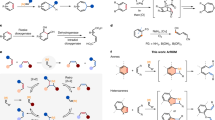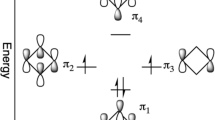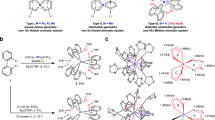Abstract
Hoog, Verheus and Zuiderweg1 have concluded generally that paraffins with structures not readily permitting the formation of a six–membered carbon ring are not appreciably aromatized or isomerized over cyclization catalysts. While studying the cyclization of hydrocarbon mixtures in these laboratories, however, it was found that at 550°C. with a liquid catalyst–space velocity of 0.33 c.c./c.c./hour and a 6 atomic per cent molybdenum oxide–activated alumina catalyst in a mild steel catalyst tube, considerable formation of aromatics from pure 2.2.4. trimethyl pentane resulted, accompanied by cracking. The aromatics contained mixed xylenes, o-xylene being identified, together with some naphthalene.
This is a preview of subscription content, access via your institution
Access options
Subscribe to this journal
Receive 51 print issues and online access
$199.00 per year
only $3.90 per issue
Buy this article
- Purchase on SpringerLink
- Instant access to full article PDF
Prices may be subject to local taxes which are calculated during checkout
Similar content being viewed by others
References
Trans. Farad. Soc., 35, 993 (1939).
Author information
Authors and Affiliations
Rights and permissions
About this article
Cite this article
GREEN, S., NASH, A. Catalytic Aromatization and Isomerization of 2.2.4.–Trimethyl Pentane. Nature 148, 53–54 (1941). https://doi.org/10.1038/148053b0
Issue date:
DOI: https://doi.org/10.1038/148053b0



